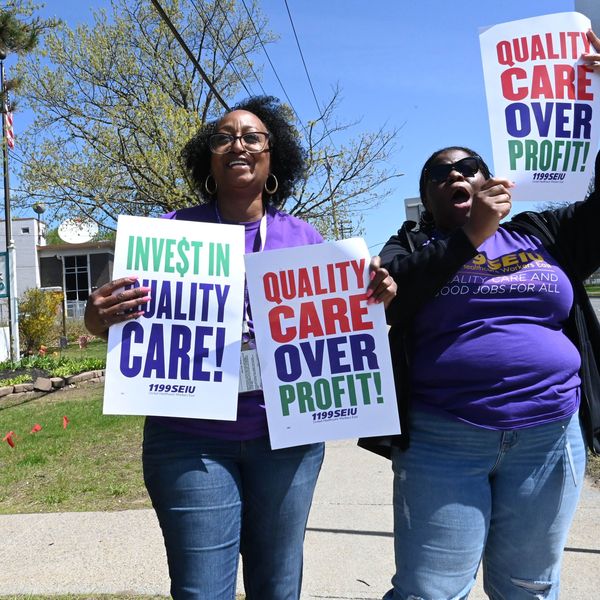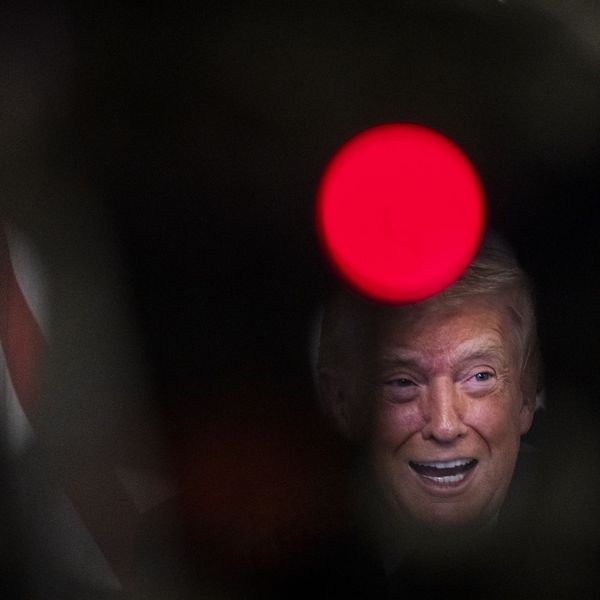True Colors Are to Dye For
Americans should think twice before adding green food coloring to everything from bagels to beer on St. Patrick's Day.
A friend and I once tricked his kids on St. Patrick's Day. Maybe "tricked" is too strong of a word for what we did: The festive green pasta we served was spinach fettuccine, but we didn't admit that it contained traces of the vegetable.
The pasta didn't taste at all of spinach. The kids, no doubt, assumed it contained a much more "acceptable" ingredient: artificial food dye. And the meal was eaten without complaints. Afterward, I 'fessed up, gleeful to prove to the kids that vegetables can sometimes taste good.

We pulled the same stunt at the little one's birthday party, using a few drops of beet juice to dye the cake frosting pink. That secret had to be kept under wraps because even some grown-ups at the party would have avoided the cake had they known. They were much happier assuming the frosting was made with a food dye derived from a petroleum product.
St. Patrick's Day is the day of green food -- and I don't mean salad. Green food dyes are added to everything from bagels to beer. For years now, the Center for Science in the Public Interest has warned us that these dyes pose "a rainbow of risks." At the top of their list of concerns is cancer. Several commonly used and legal food dyes have been linked to it in tests on lab animals.
Even more commonly cited concerns are hyperactivity and behavioral problems in children. Years ago, one of my friends found that his stepson was extremely sensitive to these food dyes. After removing the dyes from his stepson's diet, the little boy's behavior improved. It was like night and day. After that, every now and then, the little one would act up and his parents would find out he'd had a popsicle or other artificially colorful snack at a friend's house.
Of course, not all kids are so sensitive. But imagine your child attending school with someone else who is. How much attention will your child receive if the teacher is trying to deal with an off-the-wall classmate who ate Froot Loops for breakfast?
Sometimes, the chemicals in our lives are there to serve a purpose. Sometimes, the chemicals we use might be harmful, but there are no safer alternatives. For example, I'm not sure what effects the pharmaceuticals I take every day for my migraines have on my body. But I'm positive that living with daily migraines is worse.
Artificial food dyes serve no purpose (although a 5-year-old who wants a birthday cake with pink frosting might disagree) and we have safe alternatives. A few years ago, the British banned artificial food dyes for these reasons. A McDonald's strawberry sundae in London is red because it contains strawberries. Imagine that! Over here, it's dyed red with artificial food coloring.
You know what that means? All of the world's largest food companies that sell the same products in both the UK and the United States already know how to make their products without food dyes. And, apparently, the cost of making the switch did not put them out of business or tank their profits.
Why must Americans continue to face risks from artificial food dyes while the British play it safe? Let's follow their lead on this one.
An Urgent Message From Our Co-Founder
Dear Common Dreams reader, The U.S. is on a fast track to authoritarianism like nothing I've ever seen. Meanwhile, corporate news outlets are utterly capitulating to Trump, twisting their coverage to avoid drawing his ire while lining up to stuff cash in his pockets. That's why I believe that Common Dreams is doing the best and most consequential reporting that we've ever done. Our small but mighty team is a progressive reporting powerhouse, covering the news every day that the corporate media never will. Our mission has always been simple: To inform. To inspire. And to ignite change for the common good. Now here's the key piece that I want all our readers to understand: None of this would be possible without your financial support. That's not just some fundraising cliche. It's the absolute and literal truth. We don't accept corporate advertising and never will. We don't have a paywall because we don't think people should be blocked from critical news based on their ability to pay. Everything we do is funded by the donations of readers like you. Will you donate now to help power the nonprofit, independent reporting of Common Dreams? Thank you for being a vital member of our community. Together, we can keep independent journalism alive when it’s needed most. - Craig Brown, Co-founder |
A friend and I once tricked his kids on St. Patrick's Day. Maybe "tricked" is too strong of a word for what we did: The festive green pasta we served was spinach fettuccine, but we didn't admit that it contained traces of the vegetable.
The pasta didn't taste at all of spinach. The kids, no doubt, assumed it contained a much more "acceptable" ingredient: artificial food dye. And the meal was eaten without complaints. Afterward, I 'fessed up, gleeful to prove to the kids that vegetables can sometimes taste good.

We pulled the same stunt at the little one's birthday party, using a few drops of beet juice to dye the cake frosting pink. That secret had to be kept under wraps because even some grown-ups at the party would have avoided the cake had they known. They were much happier assuming the frosting was made with a food dye derived from a petroleum product.
St. Patrick's Day is the day of green food -- and I don't mean salad. Green food dyes are added to everything from bagels to beer. For years now, the Center for Science in the Public Interest has warned us that these dyes pose "a rainbow of risks." At the top of their list of concerns is cancer. Several commonly used and legal food dyes have been linked to it in tests on lab animals.
Even more commonly cited concerns are hyperactivity and behavioral problems in children. Years ago, one of my friends found that his stepson was extremely sensitive to these food dyes. After removing the dyes from his stepson's diet, the little boy's behavior improved. It was like night and day. After that, every now and then, the little one would act up and his parents would find out he'd had a popsicle or other artificially colorful snack at a friend's house.
Of course, not all kids are so sensitive. But imagine your child attending school with someone else who is. How much attention will your child receive if the teacher is trying to deal with an off-the-wall classmate who ate Froot Loops for breakfast?
Sometimes, the chemicals in our lives are there to serve a purpose. Sometimes, the chemicals we use might be harmful, but there are no safer alternatives. For example, I'm not sure what effects the pharmaceuticals I take every day for my migraines have on my body. But I'm positive that living with daily migraines is worse.
Artificial food dyes serve no purpose (although a 5-year-old who wants a birthday cake with pink frosting might disagree) and we have safe alternatives. A few years ago, the British banned artificial food dyes for these reasons. A McDonald's strawberry sundae in London is red because it contains strawberries. Imagine that! Over here, it's dyed red with artificial food coloring.
You know what that means? All of the world's largest food companies that sell the same products in both the UK and the United States already know how to make their products without food dyes. And, apparently, the cost of making the switch did not put them out of business or tank their profits.
Why must Americans continue to face risks from artificial food dyes while the British play it safe? Let's follow their lead on this one.
A friend and I once tricked his kids on St. Patrick's Day. Maybe "tricked" is too strong of a word for what we did: The festive green pasta we served was spinach fettuccine, but we didn't admit that it contained traces of the vegetable.
The pasta didn't taste at all of spinach. The kids, no doubt, assumed it contained a much more "acceptable" ingredient: artificial food dye. And the meal was eaten without complaints. Afterward, I 'fessed up, gleeful to prove to the kids that vegetables can sometimes taste good.

We pulled the same stunt at the little one's birthday party, using a few drops of beet juice to dye the cake frosting pink. That secret had to be kept under wraps because even some grown-ups at the party would have avoided the cake had they known. They were much happier assuming the frosting was made with a food dye derived from a petroleum product.
St. Patrick's Day is the day of green food -- and I don't mean salad. Green food dyes are added to everything from bagels to beer. For years now, the Center for Science in the Public Interest has warned us that these dyes pose "a rainbow of risks." At the top of their list of concerns is cancer. Several commonly used and legal food dyes have been linked to it in tests on lab animals.
Even more commonly cited concerns are hyperactivity and behavioral problems in children. Years ago, one of my friends found that his stepson was extremely sensitive to these food dyes. After removing the dyes from his stepson's diet, the little boy's behavior improved. It was like night and day. After that, every now and then, the little one would act up and his parents would find out he'd had a popsicle or other artificially colorful snack at a friend's house.
Of course, not all kids are so sensitive. But imagine your child attending school with someone else who is. How much attention will your child receive if the teacher is trying to deal with an off-the-wall classmate who ate Froot Loops for breakfast?
Sometimes, the chemicals in our lives are there to serve a purpose. Sometimes, the chemicals we use might be harmful, but there are no safer alternatives. For example, I'm not sure what effects the pharmaceuticals I take every day for my migraines have on my body. But I'm positive that living with daily migraines is worse.
Artificial food dyes serve no purpose (although a 5-year-old who wants a birthday cake with pink frosting might disagree) and we have safe alternatives. A few years ago, the British banned artificial food dyes for these reasons. A McDonald's strawberry sundae in London is red because it contains strawberries. Imagine that! Over here, it's dyed red with artificial food coloring.
You know what that means? All of the world's largest food companies that sell the same products in both the UK and the United States already know how to make their products without food dyes. And, apparently, the cost of making the switch did not put them out of business or tank their profits.
Why must Americans continue to face risks from artificial food dyes while the British play it safe? Let's follow their lead on this one.

